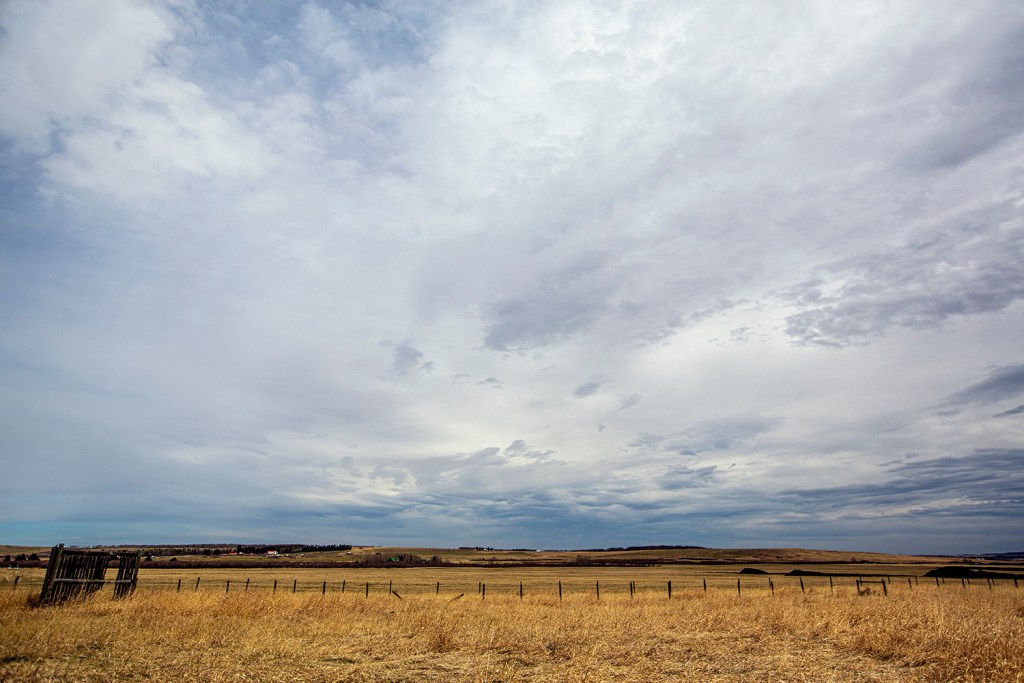Premier Jason Kenney announced that the Canadian arm of French construction giant VINCI would be granted the contract to build the Springbank dry-reservoir (SR1).
The project, which aims to mitigate significant risks posed to Calgary from flooding, began construction in late March.
The entire project will cost an estimated $744 million, of which $576 million will be provided by the province. The province has allocated $473.6 million in the budget over the next three years for the SR1 project.
VINCI was awarded the contract for their $379 million bid. It was in line with the linear trend upwards for project construction costs identified by the province.
The Premier made the announcement at the confluence of the Bow River and Elbow River. He said that the 2013 flood was the costliest in Canadian history. Total damage was estimated to be in excess of $5 billion from the flood.
“We know that was a once in a century flood. But we must be prepared for the next major flood and to prevent damage of that scale,” he said.
“This is very good news for the city. I know that Calgarians, particularly in a flood zone, have been anxious and waiting for this project to get underway.”
During that flood, 125,000 people were evacuated from 30 communities provincially. More than 14,500 homes and 1,500 businesses were directly affected.

Dry-reservoir for a 1-in-100 year event
The dry reservoir is currently being constructed near Highway 22 and Springbank Road west of Calgary. Approximately 3,700 acres would become the basin for a reservoir in the event of flooding.
A channel under construction would divert up to 600 cubic metres per second of floodwaters from the Elbow River. The Elbow River peaked at 1,240 cubic metres per second during the 2013 flood. It’s estimated that the dry reservoir would take 72 hours to fill and 40 days to empty.
In addition, Highway 22 and Springbank roadways will be raised.
Minister of Transportation Rajan Sawhney said that the province negotiated with all affected landowners. She said that the province was able to voluntarily purchase the land required for the project.
“There was no expropriation involved, and we’ve done extensive engagement with community members and Indigenous communities,” she said.
Sawhney said that the province would continue to work with those individuals who expressed concern.
“And while we’ll never have 100 per cent agreement on the project itself, I think we’ve done tremendous work. And the fact that there was no expropriation speaks volumes as to the level of engagement and the success of our interactions,” she said.

Long-term economic impacts for Calgary
Speaking on behalf of city council, Coun. Raj Dhaliwal said that the reservoir project was an essential one for the city.
“It also adds economic liability to downtown because over next year with this SR1 we know that we have a sustainable downtown which will not be negatively impacted by flooding,” he said.
“Given the changing nature of our flooding here due to climate change, this project becomes essential for protection against those different climatic events.”
The project is estimated to mitigate up to 80 per cent of downstream Elbow River flooding risk. In a submission in support of the project to the Natural Resources Conservation Board, the City of Calgary estimated that over a 100-year lifespan the reservoir would provide $2.7 billion in calculated benefits.
Frank Frigo, water resources engineer with the watershed analysis team at the City of Calgary, said that the SR1 project would work in tandem with city upgrades to the Glenmore Reservoir.
Speaking to the Community Development Committee on April 27, he said that the city’s completed $83 million investment in the reservoir doubled its flood capacity.
“Glenmore and Springbank will provide downstream communities with over a 200-year level of resilience,” he said.
Currently, the province is entering phase two of a feasibility study for a Bow River Reservoir. It could be located at three different spots west of Calgary: on the Stoney Nakoda Reserve, near Cochrane at an expanded Ghost Reservoir, or between Cochrane and the west edge of Calgary at the Bearspaw Dam.
A new reservoir would bring the flood rate during a major flooding event down to 1,200 m3/s. Or about half of what occurred during the peak of the 2013 flood on the Bow River.



